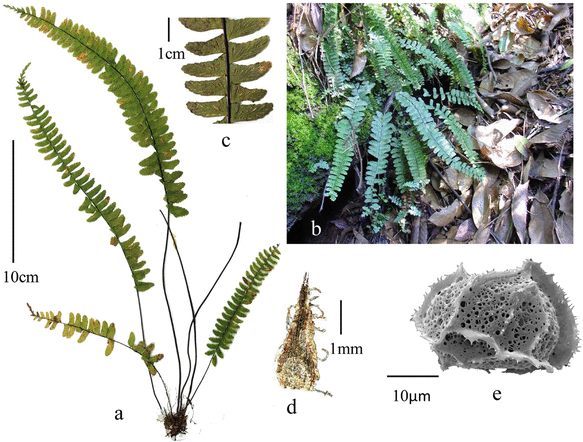Asplenium is a genus of about 700 species of ferns. The taxonomy of the A. normale complex is considered to be difficult because of the existence of not only diploid taxa, but also tetraploid taxa that originated from their diploid ancestors by either autopolyploidization or allopolyploidization, following the formation of hybrids between distinct diploids.
Researchers from Xishuangbanna Tropical Botanical Garden (XTBG) employed a diploid first approach to identify the evolutionary units of diploid taxa that can be reliably recognized using morphological characters before addressing the complicated classification of tetraploid taxa.
The researchers made special efforts to collect and identify the diploid progenitors of each polyploid lineage identified in the plastid DNA based phylogenetic hypothesis.
They identified a total of six distinct diploid species. The distinctive nature of the six diploids is strongly supported by sequence differences in plastid DNA and nuclear loci, as well as by the results of morphometric analysis.
They then identified diagnostic morphological characters to distinguish the six diploid species, resulting in their revised taxonomy. Two new species, namely, Asplenium normaloides and A. guangdongense, are included.
The two new fern species have been published in Journal of Plant Research.
Asplenium normaloides is most similar to A. normale and differs by spores with lophate-perforate perispore and more but shorter sori on the pinnae. It is only known in southeastern China and northeastern Vietnam. The new species grows in soil or on mossy rocks in dense forests at an altitude of 1000–2000 m.
Asplenium guangdongense is similar to A. normale, but differs by having no buds on the rachis, broader pinnae with usually more sori, scales on rhizome dark brown with long fibrous apices, and spores with more crests. It is only known in Guangdong Province of southern China. The new species grows on mossy rocks or soil in dense forests at an altitude of about 500 m.
Contact
CHANG Yanfen Ph.D
Center for Integrative Conservation, Xishuangbanna Tropical Botanical Garden, Chinese Academy of Sciences, Menglun, Mengla, Yunnan 666303, China
E-mail: cyf@xtbg.org.cn

Asplenium normaloides.
a Plant; b habit; c middle part of leaf; d rhizome scale; and e spore

Asplenium guangdongense.
a Plant; b habit; c middle part of leaf; d rhizome scale; and e spore
(Images by CHANG Yanfen)


